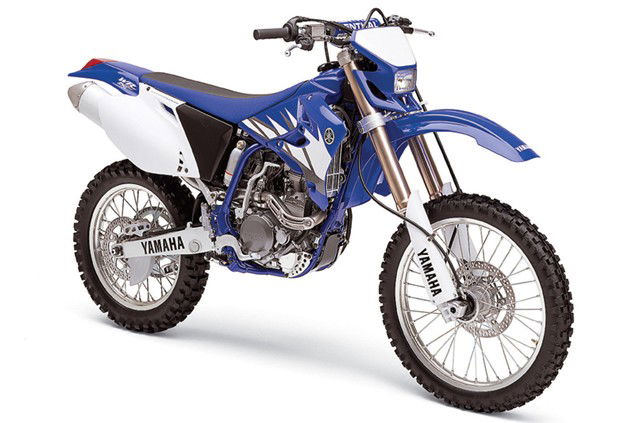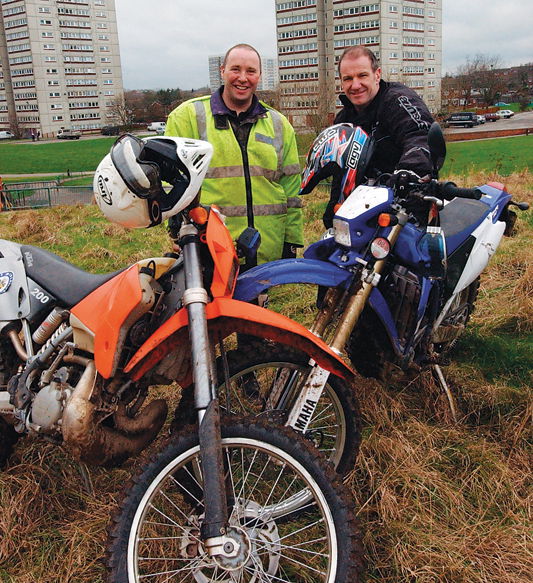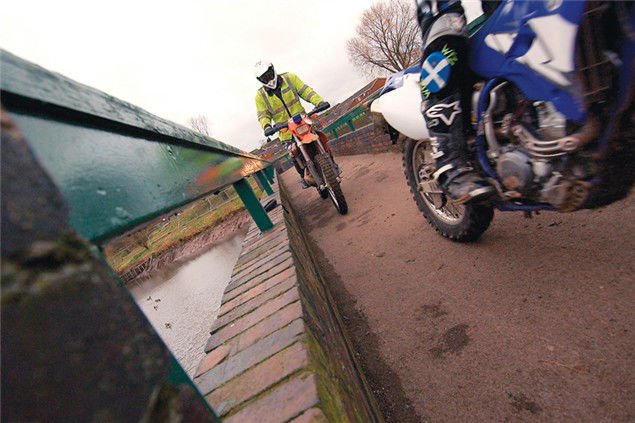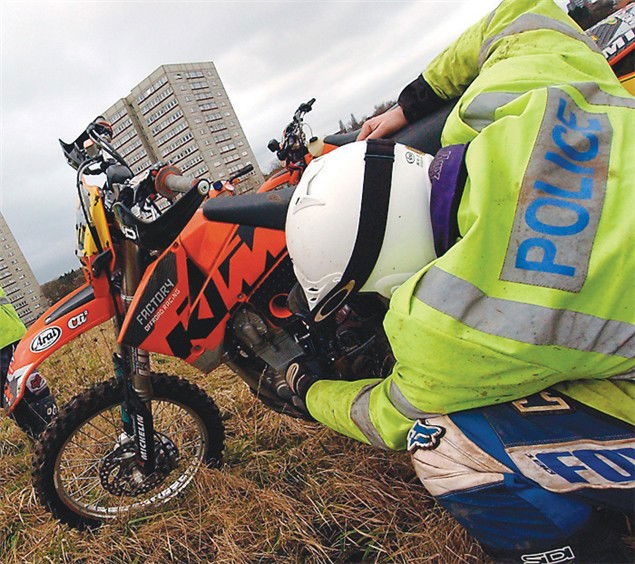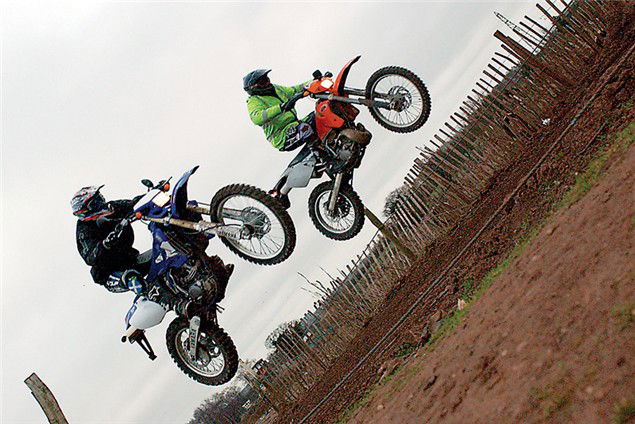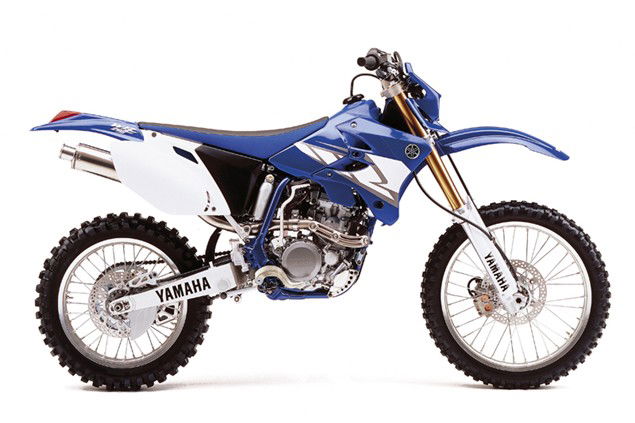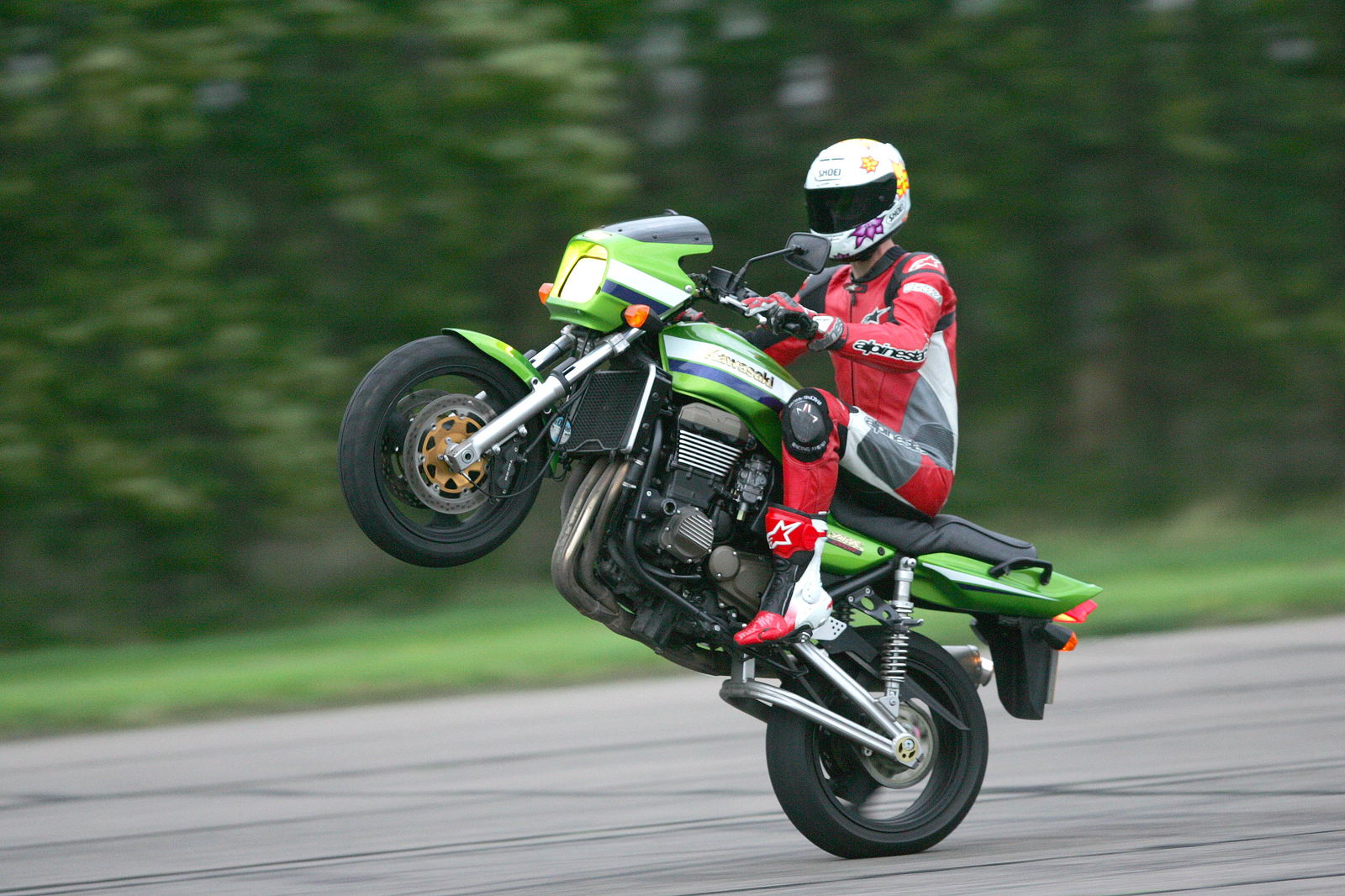Living with a Yamaha WR250F
Niall rolls in the dirt on the WR250F
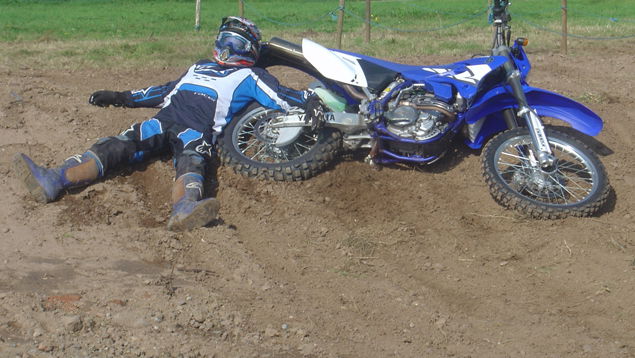
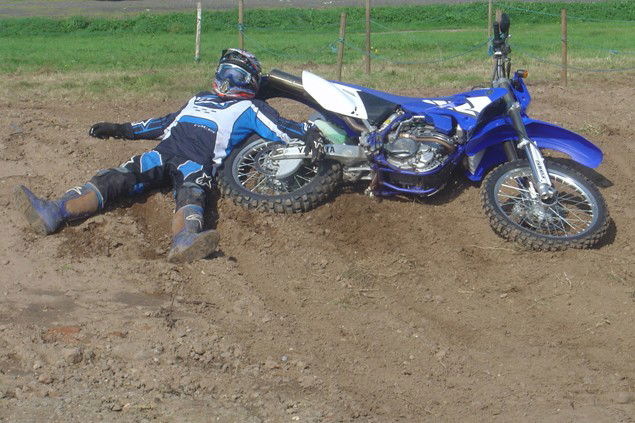
May 2005
Since taking delivery of my WR at the beginning of December I've ridden it every week this winter. There's something about an off-roader with an electric start that just gives you the extra incentive to jump on it at every opportunity. Whether it's nipping to the shops for a paper or a few hours' green laning, the little Yamaha four-stroke has been the ideal all-rounder.
The riding position is as high as a full-on 'crosser so I have to stretch before swinging a leg over. This, combined with a sidestand that half-folds every time there is no weight on it, left me under the bike more than once. So be warned.
The 46mm inverted Kayaba forks and rear Monocross suspension look as good as any factory item and, although I kept them soft, are fully adjustable. I also found plenty of braking power through the 250mm disc up front - certainly enough for traffic-light stoppies - and the 245mm disc at the rear is sharper than a normal streetbike's but also works well.
The dash is a basic speedo with no enduro timing equipment, just an indicator and high beam warning lights, so no creature comforts there.
The engine makes 40bhp at 10,500 rpm and while it would out accelerate most cars on the road it is never going to feel like a sportsbike. Having minimal torque means this baby has to be revved, but that's exactly what Yamaha's five-valve (titanium) four-stroke motor was designed to do.
Once she's wound up, cruising along at 80mph on the road is not a problem. However, the dirt is where this bike is happiest. It's very easy to ride as the standard soft suspension settings work well jumping, rattling over woops or skidding in and out of berms. On the tight and twisty moto- cross track at Mallory Park the WR is just awesome, and close to being the best bike I've ever ridden there. On longer tracks it's more challenging to ride because constant gearchanging is required to maintain good momentum. I also found I was constantly out-grunted by my buddies and their bigger four-strokes on big climbs.
The WR is a cracking enduro bike, and the only way to make this machine happy is to ride it to a motocross track. Until recently it's not something I would have chosen to do a lot of road miles on. However, having flown back with John Reynolds on an Air Ambulance from Spain to East Midlands airport my van got stranded at Stansted, so I decided to ride the WR the 120 miles there to pick it up.
After turning out of my drive and finding myself in top gear after 50 yards I was thinking I'd made a terrible mistake, but I soon discovered I could cruise happily at 80mph, manage 70 miles between fuel stops and stick my hands in the radiator ducts when frostbite loomed. Admittedly there was lots of transmission, chain and road noise, but the journey went quickly. The D606 Dunlops seemed good on muddy 'B' roads, although with near freezing temperatures they had to be cranked over with care. Although the 606s are a totally road legal tyre they do work well for trail riding, but are no match for the full-on motocross items that would greatly enhance the WR's off-road potential.
The WR is a proper off-roader made road legal, but it's not the end of the world using it daily on the road. Obeying speed limits also seems easier, so with points rapidly accumulating on my licence this might well be my bike for all seasons.
Speaking of the law, WR and I recently hooked up with the West Midlands police for a bit of off-road fun. Now, I admit that in my teens I fooled around on bikes that were less than 100% legal. Consequently if the boys in blue came anywhere near the chippy it was down a footpath, across the school playground and onto a disused railway, giving me a foolproof escape every time. In my defence I wasn't exactly causing any trouble having a Fizzie with no tax or MoT, but times were hard so my cash went on fuel, cider and the YMCA disco.
But while I wasn't a top priority for the cops in the 70s, with an increase in robberies, anti-social behaviour and the riding of stolen bikes on public land, the West Midlands Police have taken to the dirt.
Headed by Traffic Department instructor Marcus McCormick, the force has started running off-road courses for their officers at Mallory Park and the Olympia Motocross Park near the NEC. While most of their riders are very competent at high speed on the road, chasing criminals across muddy wastelands is a bit alien. But through fields on big BMs and Pan Europeans? No, these guys have KTM 200EXSs, XR Hondas and DR Suzukis - proper kit complete with rozzer livery and blue lights.
The training is basic but effective. Marcus follows a Geraint Jones-type training course, first getting the riders used to the feel of the knobbly tyres and riding with motocross boots. He then gradually increases difficulty by getting them onto grass, then crossing rivers and riding on full motocross tracks. If at any point they appear not to have quite what it takes, Marcus will terminate the course rather than risk anyone getting hurt, police officers or otherwise. The training also involves the legal side of riding in public places.
For example, pursuits should be at the officer's discretion, kept as safe as possible, never continued onto main roads and the riders must be easily identified as police so Granny doesn't clobber them with her brolly as they ride past. Patrols take place at least once a week or more if they receive complaints of major disturbances.
I was concerned that all this was a bit of overkill to nail down youngsters riding a 30 quid scooter round some parkland, but they assured me it's not the case. Their targets are hooligans scaring neighbourhoods on stolen 'crossers and quads, or catching burglars making their escape on bikes through the massive network of paths and fields covering a 15-mile radius around the Solihull area. Persistent offenders will have their bikes confiscated and are then charged £120 to reclaim them, plus storage. Ouch, that's a lot of cider, lads!
It felt weird on patrol with Marcus and Aaron as we rode down paths, across playing fields and through brooks, sometimes alongside dog walkers and ladies with prams. I continually felt like I was about to get nicked! They took me to a few likely spots but it was a quiet day, so apart from lots of quad tracks and one bloke on a KTM we didn't get any action. I asked if they were ever baited by lads looking for a chase. Marcus said that used to happen but word has spread that the cops are pretty handy, and he reckons with 450 EXCs arriving soon escaping will be even more difficult.
I thoroughly enjoyed my day out with the lads and was pleased to find that they're not looking to lock up kids having harmless fun. Their target is hardcore trouble makers and thieves that can make all of our lives a misery.
I couldn't relax as flashbacks to my adolescence made me feel like a poacher turned gamekeeper. Marcus and Aaron had no such problems, and with a job like this they could well be the happiest Bobbies in the land.
December 2005
I have used the WR on the road a fair bit recently for no other reason than it was the first means of transport I would come into contact with after entering my shed.
Unfortunately, no matter many times I set off down the road and how gently I open the throttle, it still gets into top gear within 30 metres of my front gate. It also develops an intermittent flat spot when ridden for any distance on a constant throttle, so I can categorically say we are not a happy combination on the Queen's highway. Off-road is a different matter however, and for a rider of my ability there has been no better bike for green laning in the rolling Leicestershire countryside. But my favourite outing is still a trip to the Mallory Park motocross track, which has recently had a total revamp ready for the upcoming, end of season, multi-discipline Moto 1 event. The tight and twisty track has only three jumps, one tabletop and one long, fifth-gear straight, and it suits me and the WR250 perfectly.
On track the WR constantly reminds you of its close relation, the YZ 250F. All modern four-stroke 'crossers make occasional off road riders faster, better jumpers and more confident riders. The advantage you have with the WR is that you can have a serious day at the track then ride home - providing a) you have some energy left and b) you are still in one piece. Whenever I've had two-stroke crossers I've been happy to maintain them myself, but I'd recommend you have dealers or experts take care of your four-stroke. I've enjoyed trouble-free ownership but I do know of others that have paid a high price because of neglect. Oil changes and valve clearances are particularly important, but I would always leave maintenance to the pros.
The usual parts such as tyres, brake pads and chains wear out quickly, but they always do on pukka off-roaders like this - it's because you're riding hard and having fun.
Generally my WR has been absolutely bullet-proof, and with a new set of plastics fitted would scrub up like new - bent bars and twisted sidepanels are the worst injuries we have sustained during our six-month relationship this year. In fact, without doubt the worst thing that's happened to the WR recently is that Yamaha has asked for it back, so by the time you read this my little blue beauty will have been hosed down one last time, strapped into the back of a van and taken back to Weybridge.
But is a WR250 right for you? Buy an R6 if you want to do track days and go Sunday morning scratching, but if you need a street legal off-roader this might be the one.
